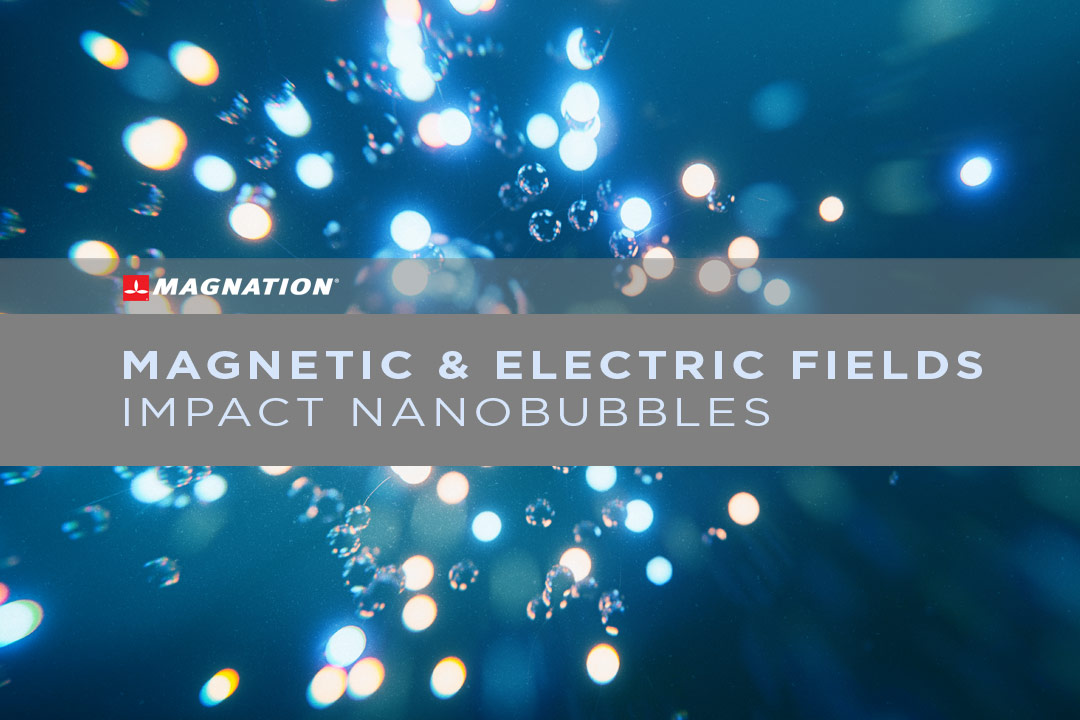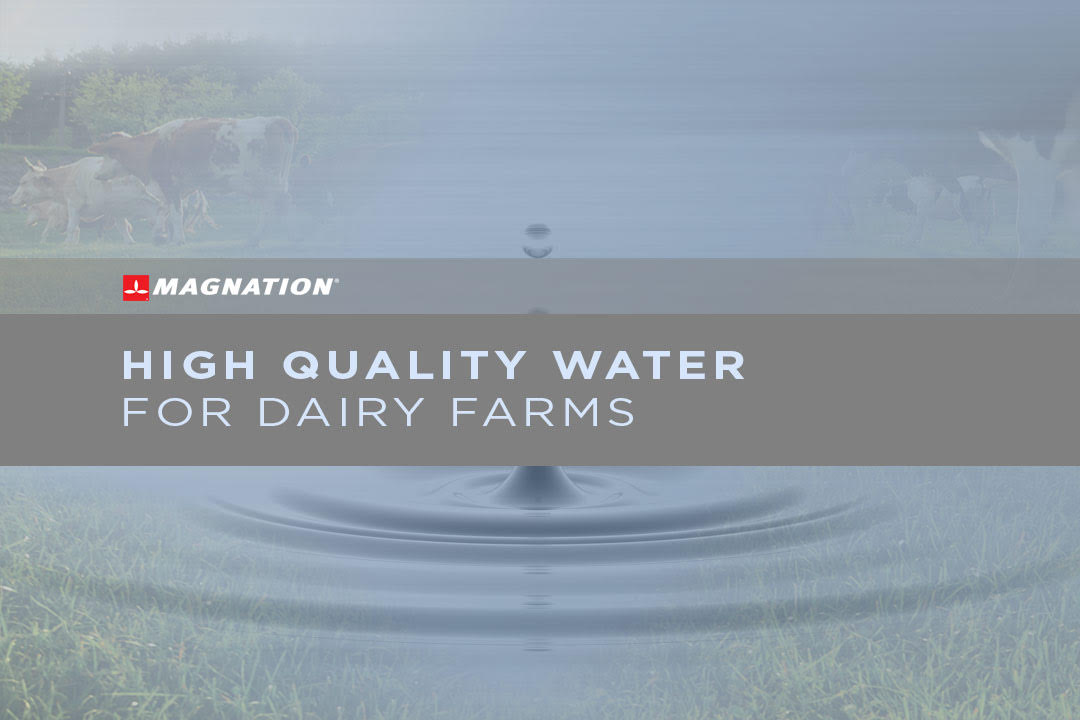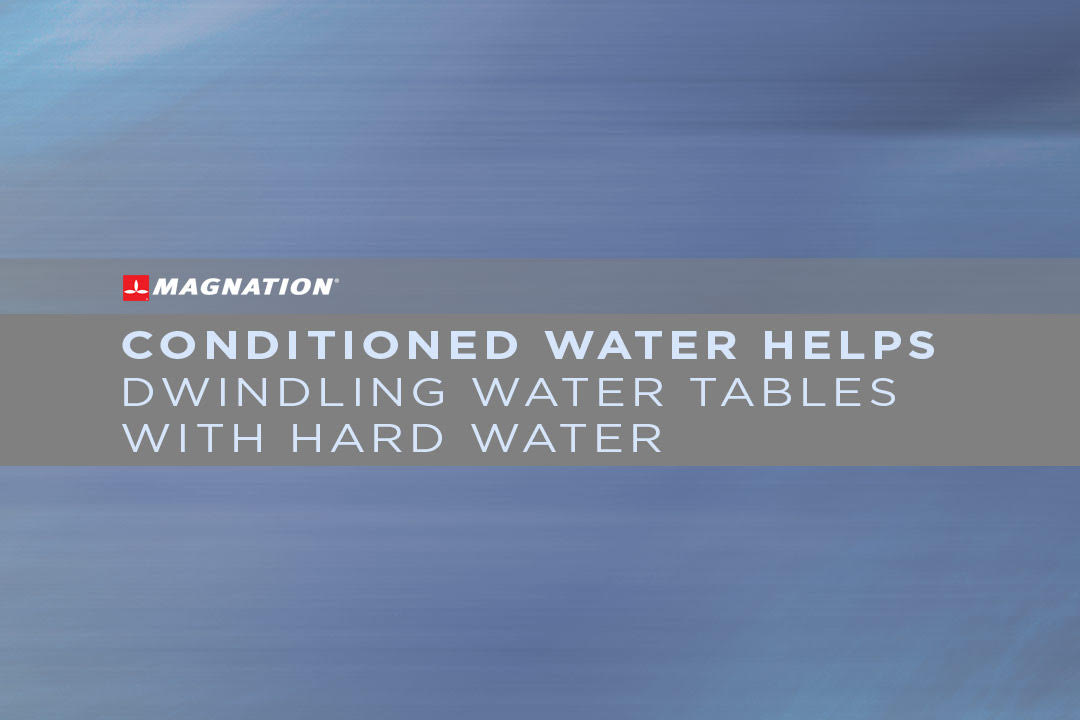
Magnetic and Electric Fields Impact Nanobubbles and Improve Water Conditioning
During 1994, a group of Australian researchers headed by Phil Attard saw two surfaces in water that should have repelled one another have opposite reactions. The researchers theorized that extremely small bubbles, or nanobubbles, formed from dissolved gasses and attached to the surfaces. Research proved that the bulk nanobubbles formed a bridge between the surfaces and that surface tension drew the surfaces together.
With diameters of 100 nanometers or less, nanobubbles resemble other bubbles in name only. Rather than disappearing in seconds, nanobubbles can exist for hours, even days. In contrast to other bubbles that have high internal pressures, nanobubbles have an internal pressure at or near atmospheric pressure. A coating of dissolved particles that makes up the air-water interface protects nanobubbles from decreased surface tension around the bubbles and cuts any differences in pressure that may exist. As a result, nanobubbles have decreased movement and stable gas diffusion properties. .
Scientists continue to debate about the ability of a nanobubble to survive and whether accepted equations apply to nanobubbles. One theory suggests that the thin film that surrounds a nanobubble absorbs gas. As this continuous gas absorption occurs, other gas molecules flow into the bubble. Other theories maintain that escaping gas aids stability by reducing the curvature of a nanobubble.
External Electric Fields Generate Bulk Nanobubbles for Effective and Sustainable Water Treatment
Research has demonstrated that low-power electric fields generate bulk nanobubbles. Activating a sustained, low-energy, direct current electric field within water caused the amount of gas molecules in water to dramatically increase. The increase in gas molecules created a pressure drop and led to the formation of nanobubbles.
Applying low-power electric fields to nanobubbles also reduced the size and changed the shape of the bubbles. The change in bubble size occurs through an increase in the diffusion coefficient of gasses and a decrease in viscosity. As a result, the peak value of carbon dioxide in the bubbles decreases with the smaller amount of gas content inside the bubble. Applying an electric field causes the angle of the hydrogen bond to increase and allows the rotation of water molecules to break the original hydrogen bond and cause viscosity to decrease for improved flow.
Scientists also found that the presence of hydrophobic gasses in water enhanced the effect of the electric field while increasing the separation of hydrophobic particles. Hydrophobic gasses feature individual molecules of gas trapped inside a very rigid, hydrogen-bonded network of water molecules. Alkanes, fats, oils, and greasy substances contain hydrophobic molecules.
The gas molecules have nonpolar properties that cause the molecules to repel from masses of water. Applying an electric field causes the non-polar gas molecules to become more active and to bond together to reduce the surface area exposed to water. Any increase in the quantity of hydrophobic molecules increases the contact angle of the hydrophobic molecule.
Magnetic fields Generate Nanobubbles and Remove Calcium Carbonate
Inducing an alternative magnetic field (AMF) also generates clusters of nanobubbles in flowing water. Within a core device located inside a pipe, the positioning and orientation of high strength magnets around water flowing through a cylinder produces an alternating magnetic field. Exposing water to the rapidly changing magnetic field destabilizes any dissolved gas molecules in the water. Destabilizing the gas molecules generates the nanobubbles.
While research has proven that treating water through magnetism removes calcium carbonate coatings from the inner walls of pipe and protects steel pipe from corrosion, additional research also shows that generating clusters of nanobubbles with a magnetic field dissolves calcium carbonate. Along with dissolving minerals, applying a magnetic field to generate nanobubble clusters prevents fouling of pipe systems used for desalination plants, cooling water systems, and irrigation systems.
Breaking down calcium carbonate minerals by applying an alternating magnetic field provides a cost-effective method for increasing crop production. The increase in soil porousness that occurs through the breakdown of calcium carbonate allows plants to uptake water more efficiently and promotes the transfer of gasses to roots. Along with having low requirements for energy, AMF-based systems lessen the need for irrigation through the properties of nanobubbles.
Magnation Water Technologies Produce Nanobubbles
The devices manufactured by Magnation Water Technologies combine alternating magnetic fields and induced direct current electric fields to generate nanobubbles. Water conditioned through Magnation devices has improved solubility, more dissolved gasses, and reduced viscosity. The internal design of Magnation devices also lowers the surface tension of water. Each of those factors contributes to the generation and stability of nanobubbles.
Along with applying electric and magnetic fields, Magnation devices use vortexing, centrifugal, and centripetal forces to condition water. Water spinning around a central axis creates a tornado-like effect that allows nanobubbles to break down calcium carbonate minerals. Centrifugal and centripetal forces also prevent mineral particles from adhering to pipe or pump surfaces. The combination of forces push water and particles to the edge of a vortex, accelerate the motion of the water and particles while conserving water and energy.
All Magnation in-line products include a risk-free, two-year money back guarantee. Magnation guarantees that their devices will produce benefits ranging from decreased water usage to increased crop yield production. If you would like to learn more about how Magnation’s products enhance water conditioning and generate nanobubbles, contact a water conditioning expert by calling 888.820.0363.










Comments
Add Comment